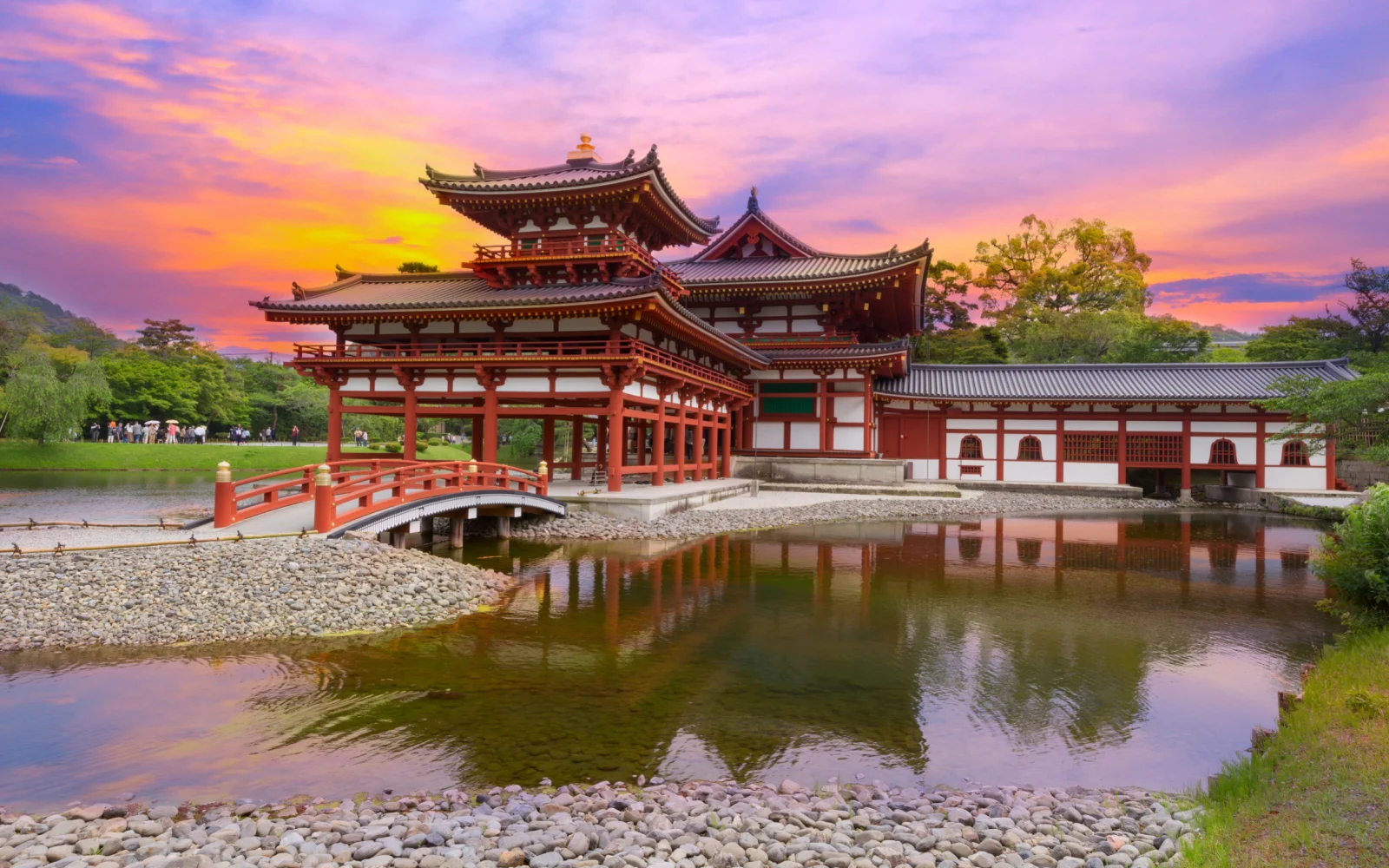Kyoto is one of the most popular tourist destinations in Japan. In 2019, a whopping 87.91 million tourists visited the city, including domestic and international visitors.
Kyoto was Imperial Japan’s capital, which means that it is full of historic sites such as the medieval wooden houses of Higashiyama district, thousands of temples including Kiyomizu-dera Temple, and the Golden Temple.
But while this storied city is rich in history and culture, is Kyoto safe to visit? Here’s our take.
Is Kyoto Safe to Visit in 2025?
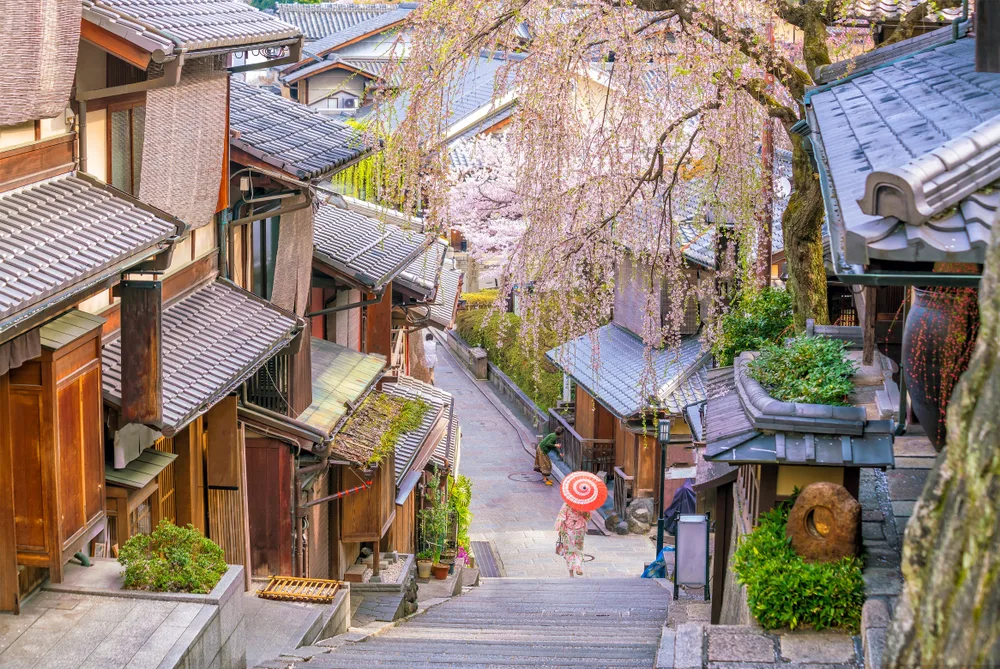
f11photo/Shutterstock
Yes. Kyoto is very safe to visit, just like all of Japan. In fact, according to many reports, it is one of the safest cities in Japan.
You should be on your guard against petty crimes such as pickpocketing and bag snatching since they can still happen, but the likelihood that as a foreigner you will experience crime is very unlikely.
You may have some concerns about visiting Kyoto, the same that you would about any city.
These concerns may include:
- Petty theft
- Pickpocketing
- Scams
- Sexual harassment
- Drink spiking
However, the likelihood of any of those problems occurring while you are in Kyoto is extremely low. It helps that Japan overall is extremely safe.
The United States has Japan under a Level One travel advisory, just telling people to exercise normal safety precautions. Canada also gives its citizens the green light to travel to Japan overall.
If the whole country is safe, then even a big city such as Kyoto will be safe for visitors. The one problem you should watch out for when planning a trip to Kyoto is the risk of natural disasters.
Japan is located on the Ring of Fire, a region of the Pacific Ocean on the boundaries between several tectonic plates that experiences most of the world’s volcanic eruptions and earthquakes. Kyoto is affected by these disasters, just like the rest of Japan.
The most likely natural disaster you will experience while you are in Kyoto is an earthquake. Japan is very seismically active, and Kyoto is located along several fault lines, including the Hanaore fault.
The city of Kyoto put together an earthquake preparedness guide for foreigners. If you are inside, seek shelter under a table, in a door frame, or near a sturdy wall or pillar.
If you are outside, avoid buildings and seek open areas where nothing will fall on you. After earthquakes, there is often a tsunami risk since Japan is an island country.
If the government announces a tsunami warning, evacuate Kyoto’s coastal areas and don’t be near bodies of water such as rivers. Japanese society is very well-prepared for earthquakes, so just follow the lead of what other people around you are doing.
Follow the news while you are there and obey any government alerts. Most hotel rooms will also have earthquake preparedness information displayed for tourists.
Crime in Kyoto
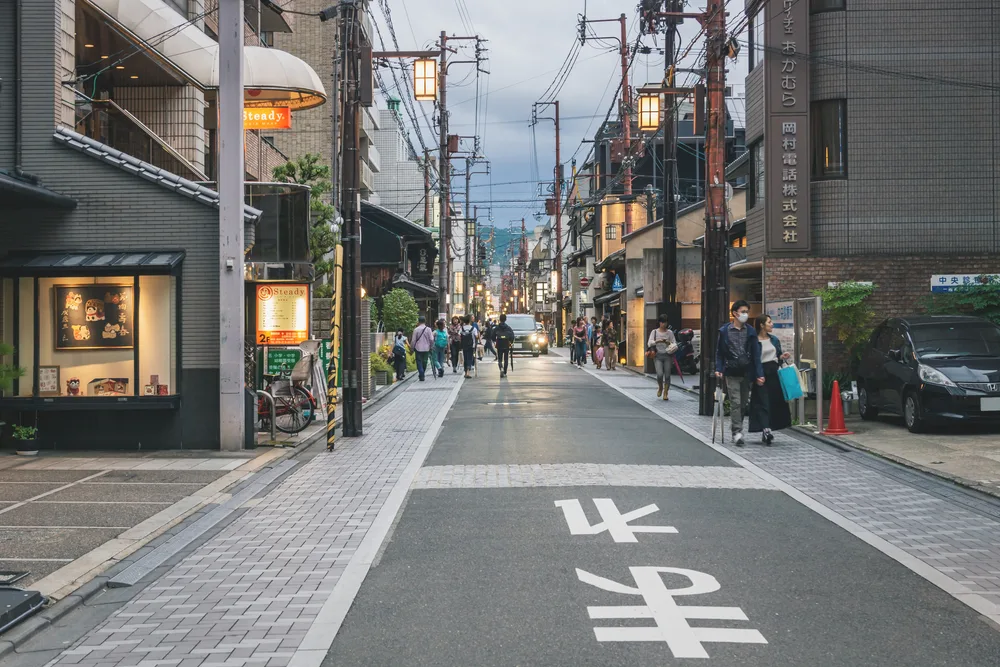
Kyoto, Japan – 17 September 2017: Normal post-covid Japanese street life at small road with power lines in the evening/Loes Kieboom/Shutterstock
One of the primary concerns people have when going to a new place is crime. People feel vulnerable when they go somewhere new, and they are worried that some scammer or criminal might try to take advantage of them.
You don’t have to worry about crime in Kyoto. The city has one of Japan’s lowest crime rates, which is saying something considering that Japan’s crime rate overall is very low.
You should still exercise some precautions to stay on the safe side, but it is extremely unlikely that something might happen to you. Numbeo conducted a survey of Kyoto’s residents and expats and used it to figure out the city’s crime index rating.
The results showed that Kyoto scored a 9.46 out of 100 on the crime index, which is extremely low. Respondents were not worried at all about most crimes, ranging from petty theft to break-ins to assault.
This perception of Kyoto as a safe city is backed up by reality. The overall crime rate in Kyoto is just 81.8 incidents per 100,000 people. That is an extremely low rate, especially for a big city.
Most crimes that do occur in Kyoto are petty incidents such as vandalism, drug abuse, or petty theft of objects such as umbrellas. The violent crime rate in Kyoto is even lower than the overall crime rate.
According to one source, the gun death rate in the city is just 0.6 incidents per 100,000 people. Annually, Kyoto has 0.3 homicide victims per 100,000 people.
The rates of other violent crimes in the city are also very low. In Japan overall, there is a concern about rising crime rates. Some Kyoto residents have also expressed in surveys that they are concerned about increased crime.
However, the crime rate is still very low. The perception that crime has drastically increased is influenced more by a few high-profile incidents than by a real-time increase in crime.
Many visitors to Kyoto have said that this is one of the safest cities they’ve ever visited.
You should take some precautions when you are there as even safe cities experience problems. However, you don’t have to worry about your safety, especially not to the point that it affects your vacation.
Petty Theft
The most likely crime that you will encounter when you go to Kyoto, if you experience a crime at all, is petty theft. Petty theft occurs everywhere in the world, and Kyoto is no different.
People will always have trouble resisting the temptation of a theft opportunity. In its travel advisory for Japan, the Australian government explains that petty theft sometimes happens and gives the example of bag snatching at popular tourist destinations.
This can occur in Kyoto and tourists have been victims of it in the past. Make sure that your bags are secure when you are at popular tourist destinations such as the Golden Temple.
Opt for a bag that is harder to snatch, such as a cross-body bag. Pickpocketing can also happen in Kyoto.
Pickpockets usually operate in crowded areas where they know that they can take someone’s valuables and quickly slip away without being noticed and where jostling won’t be noticed right away.
Common locations for pickpocketing in Kyoto are popular tourist attractions such as the local parks. Rates of pickpocketing increase when the city gets more crowded, for example around the annual cherry blossom festival.
Public transportation is also a common location for pickpockets, especially commuter and subway trains. Although pickpocketing can happen, the rate of pickpocketing is still fairly low.
You can prevent it with some basic precautions. Put your valuables in a safe place that isn’t easily accessible to a thief. Try to walk with purpose and not look like an easy target. Many people in Kyoto complain about the theft of unsecured items.
The objects that are most likely to “disappear” are umbrellas and bicycles. If you rent a bicycle, make sure that you lock it up securely when you park it.
Although you should be prepared in case someone attempts to rob you, that doesn’t mean it is likely to happen. You are far more likely to encounter good people that will return things that you lose than thieves in Kyoto.
Sexual Harassment
Unfortunately, all of Japan has a problem with sexual harassment. Kyoto is no different. Sexual harassment in Japan usually takes the form of inappropriate touching.
Harassers will take advantage of crowded public spaces, usually trains, to touch women without their permission. If you notice someone doing this to you, make a scene immediately.
Japanese culture hates noise, and the man will probably feel embarrassed and stop. If you are a woman traveling alone, Kyoto’s commuter trains offer cars that are just for women. Take advantage of this feature to get a safe space away from potential harassment.
Kyoto’s subway doesn’t have women-only cars yet. Drink spiking is another crime that frequently occurs in Japan. Assaulters will target women and incapacitate them by spiking drinks.
Then, they rob them or assault them. This crime happens most often in Tokyo’s notorious nightlife districts. Nightlife in Kyoto is far more laid-back than in Tokyo, so you don’t have to be as worried about this crime.
Still, it is a good idea to keep an eye on your drinks. The UK government warns its citizens that Japan’s legal system is notoriously unfriendly to victims of sexual assault.
Avoiding Bad Areas
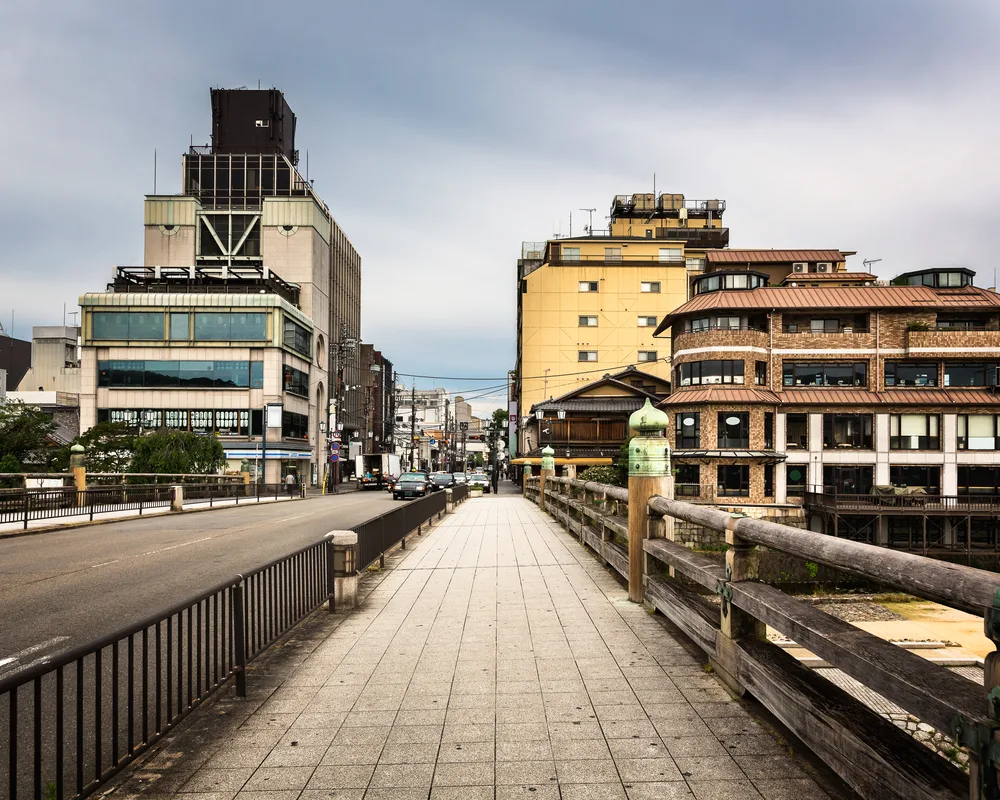
ansharphoo/Shutterstock
Whenever you travel to a new place, it’s a good idea to research potentially dangerous areas so you don’t wander into a bad neighborhood. Kyoto has no unsafe areas. The entire city is so safe, that crime is low everywhere.
Women traveling alone at night should be careful along the primary nightlife streets, which are colloquially known as the Shijo/Sanjo belt. There tend to be a lot of rowdy drunk men there, which is sometimes uncomfortable for women.
Things to Consider
Here are a few safety tips for traveling to Kyoto:
- Kyoto has police boxes called koban at many major intersections. You can go there to ask for help or report a crime, but keep in mind that most of the policemen don’t speak much English. Try to pick up a few basic Japanese phrases before you visit or get a native speaker to come with you.
- Like elsewhere in Japan, drugs are illegal in Kyoto and the penalties are severe. Don’t get caught using or trafficking illegal substances as your home embassy likely cannot do anything to help you.
- Lock the doors of your hotel room. Basic precautions such as locking your accommodation go a long way towards preventing crime in Kyoto.
- LGBT travelers will feel safe. Kyoto is one of Japan’s most LGBT-friendly destinations, with plenty of hotels, nightclubs, and businesses catering to LGBT locals and travelers.
Frequently Asked Questions
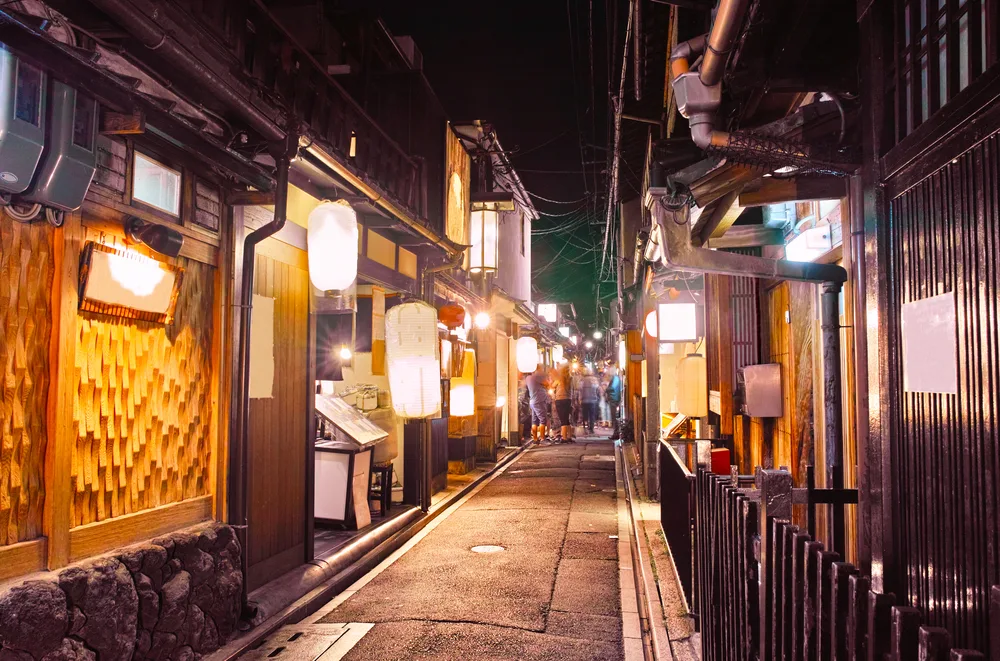
7maru/Shutterstock
Here are a few common questions other visitors to Kyoto have asked before:
Is it safe to walk at night in Kyoto?
Kyoto is one of the few places in the world where you are just as safe walking around at night as you are during the day. You might want to avoid the busiest bar streets since they get rowdy after dark, but elsewhere in the city, you will still be safe.
Is Kyoto safer than Tokyo?
This question is hard to answer because both Kyoto and Tokyo are extremely safe. They have similarly low crime rates. Kyoto is smaller and has fewer alcohol-related crimes targeting tourists in its nightlife district, so it might feel safer.
Is four nights in Kyoto too much?
Four nights in Kyoto is the perfect time to see this city! Kyoto is packed with attractions, and you want to give yourself enough time to see them all without rushing.
Is Kyoto safe for solo female travelers?
Yes, Kyoto is very safe for solo female travelers thanks to the low crime rate. Sexual harassment does occur here, just like it does elsewhere in Japan, so be prepared for that possibility.
Is Kyoto costly?
Kyoto is not a budget-friendly city, especially if you want to try out the upscale cuisine that the city is famous for. Japan overall is an expensive country to visit. However, it is one of Japan’s more affordable big cities.
So, Is Kyoto Safe to Visit?
Kyoto is a very safe city to visit. Just like Japan overall, the crime rate is very low. Violent crime is practically unheard of, especially targeted at tourists. Although petty theft does occur, rates are very low.
Just make sure that you read up on earthquake preparedness before heading to this seismically active city. So, with a safe atmosphere and culture, what are you waiting for — book your trip to Kyoto today!



